25 Most Influential Psychology Books 2010–2020
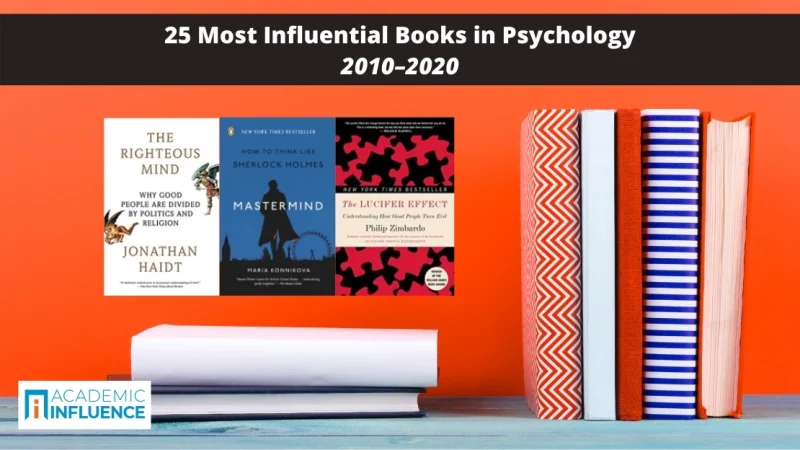
Psychology is the scientific study of the mind—primarily, the human mind, but also animal minds (comparative psychology). Understood as the study of human subjective consciousness, or the “soul” (psukhē, in Greek), psychology was for centuries an aspect of philosophy, with roots in such basic works of classical civilization as Plato’s Phaedo (early 4th c. BC), Aristotle’s On the Soul (c. 350 BC), and Augustine’s Confessions (c. 400 AD).
Key Takeaways
- The most influential psychology books featured on this list were chosen for their academic influence and popular impact on the field of psychology. Both the classic books and contemporary works on psychology and its specializations, such as evolutionary psychology, social psychology, and cognitive psychology, are featured.
- These psychology books also represent a wide spectrum of interests, from empirical research to real-life examples of the human experience. You can use these books to improve your own life and clinical practice for this reason.
- Keep in mind that many of these psychology books are their respective author’s life’s work and, thus, their views may be limited by their times (i.e., context).
A Brief History of the Field of Psychology
Slowly—over the course of several centuries following the Scientific Revolution and culminating in the nineteenth century—new scientific disciplines split off from psychology. Notable examples include the empirical study of human sensory capabilities (“psychophysics”) and the histology and physiology of the brain. During the twentieth century, these studies matured into the fields we now know as experimental psychology and neuroscience.
During the second half of the twentieth century, several new disciplines budded off from the main body of psychology. These disciplines—notably, psycholinguistics and cognitive science—attempt to understand human mentality from the point of view of logico-mathematical models that have nothing directly to do with the material (physiological) character of the brain. More particularly, cognitive science is based on the hypothesis of computationalism—a philosophy which holds that the mind stands in the same relation to the brain as computer software stands to hardware.
After shedding all of these daughter fields, psychology remains a vibrant field of research focused on the subjective mind. Today, the discipline of psychology consists of a wide variety of subfields, including clinical psychology, child psychology, developmental psychology, social psychology, evolutionary psychology, and many others.
One of the most important of these is clinical psychology, which is an applied field that attempts to alleviate the suffering of those with mental illnesses. Clinical psychology, or “psychotherapy,” is itself very broadly conceived, including a broad spectrum of different therapies. These go by such names as psychoanalysis, existential psychology, phenomenological psychology, humanistic psychology, cognitive-behavioral therapy, and a host of others.
With these considerations in mind, we have compiled a list of the most influential books in psychology over the past decade (2011–2021). We have assigned an objective measure of “influence” to each book on the basis of the number of references it has received in both the academic literature and the popular media.
Note that our list does not necessarily represent the most popular psychology books overall published during the past ten years, nor is it a straightforward list of psychology bestsellers during that time frame—for several reasons.
For one thing, we have excluded psychology textbooks and technical reference works, as well as sacred texts and fictional works which may contain related material.
Several of the works included on the list are classics in the field, dating to the early twentieth century. Nevertheless, ours is not a list of the most influential psychology books of all time. Such a list would have a very different look and feel to it.
Rather, our list provides you with the 25 books on psychology that have had the greatest combined academic and popular impact over the past decade.
Getting Your Hands On Must-read Published Books on Psychology
The most influential psychology books are popular among aspiring and practicing psychologists for the useful insights made by their authors. Their diverse subject matter, from the prehistoric origins of human sexuality to the psychology of evil, make for interesting reading, too. The classic work of C.G. Jung and Sigmung Freud complete the list of must-read psychology books.
Remember, however, that critical reading is crucial in getting the most from these psychology books! You will gain a better understanding of the cognitive, mental, and social processes involved in people’s reactions and relationships to others and to their environment.
Here are tips to get the most out of reading these influential psychology books:
Keep Your Clients/Patients in Mind
As an aspiring or practicing psychologist, you’re in the best position to make a positive difference in the lives of individuals and families. Your main concerns are their well-being, first and foremost, and their ability for self-awareness, self-knowledge, and self-regulation. In doing so, they are able to improve their human relationships and enjoy happiness in their everyday life.
You can then look for useful insights, methods and tips from the authors that you can apply in your own life and clinical practice. Take notes, too, if you can.
Increase Your Knowledge and Skills
Oftentimes, psychologists rely on the personal experiences of other individuals and professionals toward the improvement of their practice and profession. Many of these books were written based on first-person experiences and viewpoints, such as Sex at Dawn and Dreamseller: An Addiction Memoir. You will gain a better appreciation of the struggles that many of your clients/patients face in their lives by reading these accounts.
Of course, it’s always a great idea to return to the classics! The Collected Works of C.G. Jung and The Interpretation of Dreams by Sigmund Freud continue to have profound effects on contemporary psychology. You may even be able to find new topics for your scientific research—either to prove or disprove their theories, for example—from revisiting these books.
You can also share your newfound knowledge and insights, discuss classic theories, and explore research topics with your colleagues after reading these books. The windows to the human mind that these books provide are, indeed, invaluable to your own professional advancement and personal development.
Many of these books are also opportunities to expand your knowledge of applied science in psychology. You can take the existing body of knowledge presented in these books and apply them to contemporary theories. You will likely be able to assist patients with mental illnesses, for example, in their decision-making processes.
When reading these psychology books, you must remember that the authors have their own biases, too, based on their personal experiences and their specific periods. An open mind is then a must, but you should also keep in mind the contemporary body of knowledge in psychology.
In your readings, you must also remember that psychology is an ever-evolving field. You should keep the core ethics of the profession in mind, particularly integrity, fidelity and responsibility, and respect for people’s dignity and rights, at all times.
Read on for a look at The 25 Most Influential Books in Psychology.
25 Most Influential Books in Psychology
1.The Righteous Mind: Why Good People Are Divided by Politics and Religion
By: Jonathan Haidt , 2012
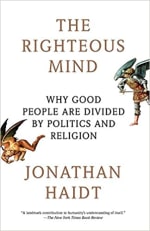

Haidt (b. 1963) is a social psychologist at New York University. His research is focused on the social context and sources of individual happiness, and related topics. One of his principal claims is that morality is shaped by emotion and intuition more than by reasoning.
The book under consideration here explores some of the ways in which differing notions of right and wrong affect people’s political opinions and allegiances.
His conclusion is that one of the main reasons for disagreement between political conservatives and liberals is the different ways in which they understand the claims of morality. Haidt identifies five separate dimensions of moral thinking, namely:
- Harm/Care
- Fairness/Reciprocity
- In-Group/Loyalty
- Authority/Respect
- Purity/Sanctity
He then observes that liberals typically only acknowledge moral claims lying within the first two dimensions, whereas conservatives recognize moral claims from all five dimensions. For this reason, Haidt calls liberals “two-channel” moral thinkers and conservatives “five-channel” moral thinkers.
2.Sex at Dawn: The Prehistoric Origins of Modern Sexuality
By: Christopher Ryan and Cacilda Jetha, 2010


Freelance psychologist Ryan (b. 1962) and psychiatrist Jethá (age unknown) are a married couple who boast of having an “open” marriage. One might say that this book is a polemical review of the paleontological and anthropological literatures whose purpose is to give their personal sexual tastes the imprimatur of cutting-edge evolutionary psychology.
Evolutionary psychology is a field which endeavors to reconstruct the “environment of evolutionary adaptedness” (EEA) of the human species. The idea is that “natural” human behavior can be read directly off the primatological and ethnographic evidence. Then, it is claimed that the unhappiness of modern humans is due to the distortion of our natural instincts by the social structures of civilization. In this way, human “liberation” consists in throwing off the restraints of civilization and returning to the prehistoric social structures which conform better to our EEA instincts.
More specifically, this book maintains that “polyamory” is the default setting of human sexuality in the EEA, and that the institution of monogamy is both a corruption of our natural proclivity for sexual promiscuity and a primary source of human suffering. Sigmund Freud (see #16 below) argued along similar lines long ago, and one might argue that this book’s main objective is to substitute the putative scientific authority of Darwin for the now-tarnished reputation of Freud.
Sex at Dawn was republished in 2011 with a new subtitle: How We Mate, Why We Stray, and What It Means for Modern Relationships.
3.Mastermind: How to Think Like Sherlock Holmes
By: Maria Konnikova , 2013
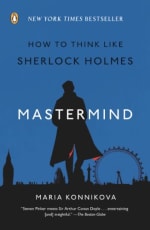

Konnikova (b. 1984) is a Russian-born psychologist, author, and podcaster. In earlier work, she applied her knowledge of psychology to the analysis of confidence artists and poker players, and to exploring such related topics as trust, misdirection, bluffing, strategy, and games of chance.
The book under discussion here uses a beloved fictional character—the master detective Sherlock Holmes created by British author Arthur Conan Doyle (1859–1930)—as a means for exploring such subjects as empirical observation and logical thinking. Holmes, who first appeared in Conan Doyle’s 1887 novel, A Study in Scarlet, was the protagonist of three more novels and 56 short stories published by Conan Doyle over four decades up through 1927.
Konnikova distinguishes what she calls Holmes’s “habits of mind” and shows how they interrelate with findings from the modern-day fields of psychology and neuroscience. These include inquisitiveness, mindfulness, restraint, and seeking objective evidence no matter whether it confirms or refutes one’s prior beliefs.
Konnikova also maintains that these habits need to be supplemented with what she calls a “a healthy dose of skepticism”—basically, a willingness to question everything one believes. If one imitates Sherlock Holmes in all these respects, she argues, then one may become a more rational thinker.
4.The Lucifer Effect: Understanding How Good People Turn Evil
By: Philip Zimbardo , 2007


Zimbardo (b. 1933) is a psychologist at Stanford University. He is primarily known for the so-called “Stanford prison experiment” that he conducted with the participation of Stanford student volunteers in 1971. The book under consideration here is fundamentally an explanation of the results and a consideration of the many implications of that famous experiment.
The set-up for the Stanford prison experiment was as follows: a group of college students were randomly assigned to two subgroups. One group was designated as “guards” and the other group as “inmates.” Then, a mock-prison environment was created and each sub-group was tasked with playing out its prescribed role within that environment.
The experiment was more “successful” than Zimbardo could have imagined. Having internalized the idea that their actions were implicitly sanctioned by authority, the “guards” quickly began to exert more and more force on the “inmates,” amounting to what would have been torture in a real-life situation and leading to an emotional breakdown on the part of one student-inmate, who had to be removed from the study. The entire experiment had to be shut down ahead of schedule to avoid even worse consequences.
In this book, Zimbardo also applies the lessons he feels were learned from his 1971 experiment to other situations, notably, the abuses that occurred at the American-run Iraqi prison, Abu Ghraib, in 2004.
In summary, Zimbardo believes that his 1971 Stanford study shows that “situations can have a more powerful influence over our behavior than most people appreciate.” He has also stated that we ought to stop thinking of cases of abuse of authority in terms of “bad apples,” and begin thinking of them instead in terms of “bad barrels”—that is, institutions—that spoil the good apples within them.
5.Quiet: The Power of Introverts in a World That Can’t Stop Talking
By: Susan Cain , 2012


Cain (b. 1968) is a lawyer and author. She has been on the faculty of the Woodhull Institute for Ethical Leadership, which trains women for leadership roles in business and the professions. She has also delivered many lectures on the psychology of introverts, including several TED talks.
Cain is best known for the book under discussion here. A separate version of the book for the benefit of teenagers and their parents appeared in 2013 under the title, Quiet Power: The Secret Strengths of Introverts.
Cain’s principal thesis is that the psychological characteristics typically associated with introverted personality types, especially creativity, are valuable to society. Therefore, introversion should not be considered pathological, but rather ought to be valued and accommodated by the institutions of an extrovert-dominated mainstream society, especially in the public schools.
6.The Blank Slate: The Modern Denial of Human Nature
By: Steven Pinker , 2002


Pinker (b. 1954) is a cognitive scientist, linguist, and author. He is a well-known advocate of both evolutionary psychology and the computational theory of the mind. Pinker is currently Johnstone Family Professor of Psychology at Harvard University.
Among Pinker’s many bestselling popular science books (see #18 below), the one under consideration here is perhaps of the greatest psychological and philosophical significance. Its thesis is very simple to state: the concept of the blank slate (tabula rasa) is no longer tenable in the light of modern science. The implications of this idea, however, are profound.
“Tabula rasa” means “a writing-tablet wiped clean” in Latin. The term is most closely associated with the English philosopher, John Locke (1632–1704). It expresses the idea that human beings are born without any significant inborn instincts or propensities. It is equivalent to the idea that education and the social environment more broadly are what determine a person’s psychological characteristics, not his or her genetic or biological endowment. In other words, “blank slate” takes the “nurture” side of the “nature/nurture” controversy.
Pinker’s book does several things. First, it presents a powerful scientific case for the impact that biology has on human personality—and thus for the falsity of the blank-slate hypothesis.
Second, the book explores the manifold ramifications of accepting the false blank-slate model of human personality and behavior, from utopian social engineering, to releasing hardened criminals back into society, to blaming parents for all the psychological difficulties faced by their children.
In short, Pinker believes that effective intervention in human affairs, whether in the form of psychotherapy or of political action, presupposes a realistic view of the biological roots underlying human nature-and as such, serves as a rejection of the blank slate theory.
7.The Bell Curve: Intelligence and Class Structure in American Life
By: Richard Herrnstein and Charles Murray , 1994
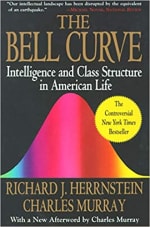

Herrnstein (1930–1994) was a psychologist at Harvard University, while Murray (b. 1943) is a political scientist and freelance author, who since 1990 has been a scholar with the American Enterprise Institute.
The book under consideration here marshals a wealth of empirical data to support the authors’ main thesis: that innate intelligence (as measured by IQ tests) is a good predictor of success in life (as measured by employment status, income level, marriage status, avoidance of crime, addiction, mental illness, etc.).
The claim that IQ may be represented by a normal distribution (bell curve) and the claim that innate intelligence makes some contribution to life success are in themselves difficult to dispute. However, the book became exceedingly controversial for its claims regarding the relationship between race and IQ.
Among these were the claim that different IQ distributions for different racial groups are centered upon different mean values (that is, the bell curves for different groups do not line up perfectly), as well as the claim that this difference in intergroup mean IQ values may partly explain intergroup differences in life outcomes.
The latter claim, especially, has been denounced by many observers as not only scientifically unsupported, but as inherently racist. Herrnstein died just as the book was being published, but Murray has been emphatic that the authors never denied the importance of the influence of environment upon human life outcomes and that their empirical claims about IQ should be viewed as only one factor among many.
8.Thinking, Fast and Slow
By: Daniel Kahneman , 2011
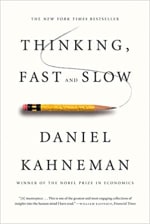

Born in Mandatory Palestine and raised in Paris and in Israel, Kahneman (b. 1934) is today a professor of psychology at Princeton University. One of the founders of the discipline of behavioral economics, in 2002 he received the Nobel Prize for Economics.
This book is a summary statement of his life’s work and is written for a broad, educated audience. Behavioral economics is too large a subject to fully encapsulate here, but perhaps its central claim is that traditional economics, which assumes that human beings are purely rational agents, has failed to take “irrational” motivations properly into account. In this book, the author contextualizes this fundamental principle within the framework of evolutionary biology.
The book’s basic idea is that human beings possess two separate but parallel cognitive systems. One of these, the “slow” system, relies upon deductive reasoning, thus conforming more closely to the traditional economist’s view of human nature.
The other system, the “fast” one, is a set of cognitive abilities that we have inherited from our primate ancestors, which provide quick responses to situations critical for survival in which time is of the essence. Such responses are sometimes known as “judgments under uncertainty.” These fast cognitive systems latch onto environmental regularities which provide an organism with inductive rules-of-thumb to act upon in lieu of deductive reasoning.
9.The Happiness Hypothesis: Finding Modern Truth in Ancient Wisdom
By: Jonathan Haidt , 2006


This book is the first one that psychologist Haidt (see #1 above) wrote for a popular audience. It proved to be equally popular with academic reviewers and ordinary readers.
The structure of the book is well summarized by its subtitle: Haidt basically compares some of the most important findings of contemporary psychology with many of the precepts of the ancient wisdom traditions, as embodied in the teachings of the Buddha, Socrates, Jesus, and others.
His conclusion is that the two traditions, ancient and modern, complement each other well, particularly in relation to such profound aspects of human experience as happiness, virtue, purpose, and meaning.
The book has 10 substantive chapters, each of which examines one theme treated by modern psychology and ancient wisdom traditions, namely:
- Dimensions of the self
- How we change our minds
- Reciprocity
- Blaming others
- Happiness
- Love
- Adversity
- The divine
- Purpose
- Balance
10.Predictably Irrational: The Hidden Forces That Shape Our Decisions
By: Dan Ariely , 2008
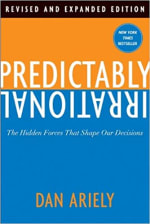

Ariely (b. 1967) was born in New York City to Israeli parents, who returned to Israel when Dan was three. Thus, Ariely was raised in Israel, in the town of Ramat HaSharon, and earned his bachelor’s degree in psychology from Tel Aviv University.
He attended the University of North Carolina at Chapel Hill for graduate school, taking a PhD in cognitive psychology in 1996. Later, Ariely completed a second doctorate (in economics) at Duke University under the supervision of the founder of behavioral economics and economics Nobelis, Daniel Kahneman (see #8 above). Today, he is the James B. Duke Professor of Psychology and Behavioral Economics at Duke University.
In addition to having published numerous academic articles and seven books for a popular audience, Ariely has given several TED talks which together have received more than 15 million views.
The book under consideration here is an attempt to make some of the basic findings of behavioral economics accessible to the general reader. More specifically, the book aims to arm readers with knowledge of some of the subconscious motivations driving much of human behavior so that they can better bring them under conscious control. In this way, readers will be able to avoid procrastination, make better decisions, and in general better achieve their goals.
A revised and expanded edition of the book was published in 2010.
11.The Coddling of the American Mind: How Good Intentions and Bad Ideas Are Setting Up a Generation for Failure
By: Greg Lukianoff and Jonathan Haidt , 2019
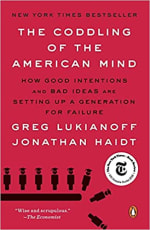

Lukianoff (b. 1974) is a lawyer who in 1999 established the Foundation for Individual Rights in Education (FIRE) to protect the first-amendment rights of college students. Together with celebrity psychologist Haidt (see #1 and #9 above), in 2015 he penned an essay with the same title as this book in The Atlantic magazine. The book is basically an expansion of that essay.
The title of the essay and the book is an allusion to the similarly themed book, The Closing of the American Mind: How Higher Education Has Failed Democracy and Impoverished the Souls of Today’s Students, published in 1987 by University of Chicago philosopher, Allan Bloom (1930–1992).
The basic claim of Lukianoff and Haidt is that the recent introduction of “safe spaces,” “trigger warnings,” and similar concepts aimed at protecting America’s college students from confronting any ideas that might hurt their feelings by challenging their worldview is killing higher education in the U.S.
The authors’ argument is that free and open intellectual debate is the raison d’être and life’s blood of a university. They argue that no institution which systematically closes itself off from rational criticism can qualify as a worthy heir of the distinguished, nearly thousand-year-old tradition of Academia.
12.Willpower: Rediscovering the Greatest Human Strength
By: Roy Baumeister and John Tierney , 2011
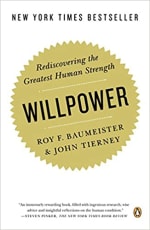

Baumeister (b. 1953) is an American-born social psychologist currently teaching at the University of Queensland in Brisbane, Australia. Tierney (b. 1953) is a journalist and author specializing in reporting on science and related issues. Baumeister is the author, co-author, or co-editor of some 30 volumes of academic and popular writings.
Baumeister’s wide-ranging work touches on topics from self, sexuality, belonging, and social rejection, to self-esteem, self-control, motivation, aggression, and self-defeating behaviors, to consciousness and free will.
Baumeister is perhaps best known for his theory of “ego depletion,” which hypothesizes that there is a finite amount of mental energy available to drive willpower in the exertion of self-control.
A major topic of this book is a spectrum of therapies devised on the basis of the author’s ego depletion theory by Baumeister himself and others. This discussion explores various methods of husbanding mental energy in order to strengthen the willpower necessary to exercise self-control—which Baumeister sees as the “greatest human strength.”
13.Anatomy of an Epidemic: Magic Bullets, Psychiatric Drugs, and the Astonishing Rise of Mental Illness in America
By: Robert Whitaker , 2010
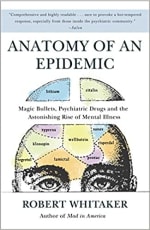

Whitaker (b. 1952) is a science journalist and author. Of his five published books, three are on the topic of psychiatry and mental illness.
The book under consideration here takes as its point of departure the following information unearthed by Whitaker: the number of persons declared officially disabled due to mental illness by the US government (and thus eligible to receive federal disability checks) approximately doubled during the 23 years between 1987 and 2010 (the year of the book’s publication). Whitaker says that he wrote this book in an effort to discover the reason behind this striking fact.
More specifically, the author considers several different theories that have been advanced, such as the dismantling of mental wards and hospitals and the invention of more-effective antipsychotic drugs. He shows that upon close examination the facts do not support these theories.
Whitaker concludes that the huge increase in mental illness in America at the end of the twentieth and beginning of the twenty-first centuries may be due to iatrogenic effects of the new drugs themselves—a claim that has been extremely controversial.
The author maintains a website, madinamerica.com, to provide interested readers access to the original data upon which his research and conclusions were based.
14.Character Strengths and Virtues: A Handbook and Classification
By: Christopher Peterson and Martin Seligman , 2004


This book is an academic handbook authored by two prominent leaders in the field of positive psychology—that is, the psychology of optimism, mental health, character, and well-being.
In its publicity for this book, the publisher has stated that, just as the Diagnostic and Statistical Manual of Mental Disorders (DSM) assesses and facilitates research on mental disorders, Character Strengths and Virtues provides a theoretical framework for understanding and developing therapeutic applications in the field of positive psychology.
Peterson (1950–2012) was a professor of psychology at the University of Michigan at Ann Arbor, where he was formerly chair of the clinical psychology department. He is one of the founders of the relatively recent sub-discipline of positive psychology.
In addition to the book under consideration here written with Seligman, Peterson has authored a textbook, A Primer in Positive Psychology (2006), and co-authored a popular book on positive psychology, as well as a two-volume history of psychology.
Seligman (b. 1942) is Zellerbach Family Professor of Psychology in the University of Pennsylvania’s Department of Psychology. He is also an expert in the field of positive psychology and is probably best known for his concept of “learned helplessness.” In addition to the volume discussed here, he has published six books for a popular audience.
This book advances a taxonomy developed by the authors, which identifies 24 measurable “character strengths” necessary for mental health, which are in turn organized into six classes of “core virtues”: namely, wisdom, courage, humanity, justice, temperance, and transcendence.
15.Why We Love Dogs, Eat Pigs, and Wear Cows: An Introduction to Carnism
By: Melanie Joy , 2009
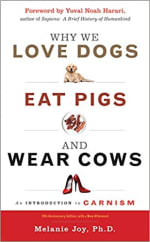

Joy (b. 1966) is a former professor of psychology and sociology at the University of Massachusetts Boston. Joy resigned her academic position to devote her attention full-time to writing and vegan activism. In addition to this book, Joy is the author or co-author of five other volumes on veganism, “carnism” (meat-eating), and other issues.
The author also co-founded, in 2010, the vegan activist website, Beyond Carnism, previously known as the Carnism Awareness and Action Network.
Joy’s basic thesis is that human beings do not require meat for nourishment; therefore, we are not carnivores by biological necessity, but rather by choice.
She also points to the inconsistency between the way we lavish love and care on some animals (dogs, cats, etc.), while treating other animals (pigs, cows, and others) which possess the same capacity for joy and suffering with (as she sees it) great callousness and cruelty. For these psychological and moral reasons, Joy argues, we both can and should choose to renounce the consumption of meat.
The author’s most-recent book is The Vegan Matrix: Understanding and Discussing Privilege Among Vegans to Build a More Inclusive and Empowered Movement (2020).
16.The Interpretation of Dreams
By: Sigmund Freud , 1899


Freud (1856–1939) was, of course, one of the most famous and important thinkers of the past century. Born in Freiberg, Austria (now Příbor, Czech Republic), into a middle-class Jewish family, he pursued courses in biology and medicine at the University of Vienna. There, he studied philosophy with Franz Brentano (1838–1913) and physiology with Ernst Wilhelm von Brücke (1819–1892), eventually spending six years working in Brücke’s laboratory on the comparative anatomy and physiology of human, vertebrate, and invertebrate brains. He received his MD degree in 1881.
After a period working in Vienna General Hospital, in 1885 Freud spent a short fellowship at the Pitié-Salpêtrière Hospital in Paris working with the neurologist, Jean-Martin Charcot (1825–1893), a pioneer in the therapeutic use of hypnosis. The following year, he established a private practice in Vienna, concentrating on female patients exhibiting symptoms of what was then known as “hysteria” (neurosis).
Beginning with his second book, Studies on Hysteria (1895), co-authored with the physician and physiologist, Josef Breuer (1842–1925), Freud began to develop his elaborate theory of the human psyche in terms of three fundamental forces reified as the Ich (the “I,” or “ego”), the Es (the “it,” or “id”), and the Über-Ich (the “over-I,” or “superego”). Freud also proposed the idea that mental illness is mainly caused by sexual repression, and pioneered the “talking cure” therapy we have come to know as “psychoanalysis.”
All of this was elaborated in a series of important monographs published by Freud over the next 40-odd years, notably, the 1899 book under discussion here, as well as The Psychopathology of Everyday Life (1904), Three Essays on the Theory of Sexuality (1905), Totem and Taboo (1913), Beyond the Pleasure Principle (1920), The Ego and the Id (1923), The Future of an Illusion (1927), Civilization and Its Discontents (1930), and Moses and Monotheism (1939). The Interpretation of Dreams (Die Traumdeutung) concentrates on the putative meaning of dreams in terms of Freud’s theory and on the use of such interpretations in psychoanalytic therapy.
This book was first translated into English in 1913 by Viennese-born psychoanalyst, Abraham Brill (1874–1948). Another translation, which has become standard, was published in 1953 as volume V of the Standard Edition of the Complete Psychological Works of Sigmund Freud, under the general editorship of the British psychoanalyst, James Strachey (1887–1967). This edition has been reprinted numerous times.
17.Mindhunter: Inside the FBI’s Elite Serial Crime Unit
By: John E. Douglas and Mark Olshaker , 1995
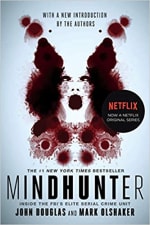

Douglas (b. 1945) is a retired special agent with the US Federal Bureau of Investigation (FBI). Olshaker (b. 1951) is a professional writer.
This book—which is the basis for a popular TV series, which ran for two seasons in 2017 and 2019—recounts Douglas’s 25 years of experience in tracking and studying serial killers and mass murderers.
On the basis of decades of personal interviews with captured serial killers and others, the author developed a special “criminal-personality profile” to help law-enforcement officials better understand the thinking of such men so as to more effectively track them down and thwart their crime sprees.
The book provides disturbing portraits of several more recent serial killers, who have become famous through the reporting of the media. These include the Atlanta child murderer, Wayne Williams; the California serial rapist and killer, Edmund Kemper; the Anchorage, Alaska, serial killer, Robert Hansen; and the South Carolina killer, Larry Gene Bell.
The book was reprinted in 2017.
18.How the Mind Works
By: Steven Pinker , 1997
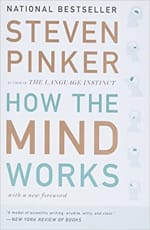

Pinker (see #6 above) is the author or editor of some 15 academic and popular volumes. The book under consideration here is the second of his books aimed at a general audience.
As a cognitive scientist and linguist, Pinker has a view of the mind known as “computationalism,” which posits a close analogy between the human mind and the computer such that the mind is to the brain as software is to hardware.
In addition, Pinker is also an enthusiastic proponent of “evolutionary psychology,” a relatively new psychological sub-discipline which attempts to explain aspects of contemporary human behavior in terms of the “selection advantage” of the behavior in the context of our “environment of evolutionary adaptedness” (EEA) during the Pleistocene epoch (see also #2 above).
This book is basically an attempt to demonstrate how these two seemingly disparate theories of the human mind—computationalism and evolutionary psychology—may be understood as complementary.
A fluent and prolific writer, Pinker is able to explain this dovetailing in terms accessible to a broad, popular readership.
19.The Varieties of Religious Experience: A Study in Human Nature
By: William James , 1902


James (1842–1910) was a professor of psychology and philosophy at Harvard University. Brother of the great novelist Henry James (1843–1916), William James was also one of the founders of the American school of philosophy known as “Pragmatism.”
James’s first significant book was his Principles of Psychology, published in 1890 in two volumes. This ground-breaking work summarizes the scientific advances in the understanding of the human mind made by the end of the nineteenth century, in a manner accessible to a broad, educated audience. James possessed a superb writing style, making him one of the most readable first-rate thinkers in the entire history of philosophy.
James insisted on paying attention to subjective or lived experience, in addition to the objective findings of the empirical science of his day. In this way, he may be considered a pioneer of the phenomenological movement, which was being developed at the same time by Franz Brentano (1838–1913), Edmund Husserl (1859–1938), and others.
Though James was a cutting-edge scientist, and by no means an orthodox theist, he maintained (controversially, but in line with his Pragmatist philosophy) that beliefs should be judged according to their “cash value” (i.e., the value they hold for the believer). Accordingly, he took religions seriously as human institutions and as valid belief systems.
The book under consideration here is a careful and scholarly—and extremely interesting—description and analysis of a wide range of historical religions and other religious phenomena. The book was derived from the Gifford Lectures for 1901–1902, which James was invited to deliver at the University of Edinburgh.
The book has been reprinted numerous times.
20.Man’s Search for Meaning
By: Viktor Frankl , 1946


Frankl (1905–1997) was an Austrian-born neurologist and psychologist. After receiving his MD in 1930, he worked at the Steinhof Psychiatric Hospital in Vienna, where he specialized in treating suicidal women.
In 1942, Frankl and his family, who were Jewish, were initially deported to the Theresienstadt concentration camp, where his father died of starvation. Subsequently, the surviving family members were sent to Auschwitz, where Frankl’s mother and brother were gassed. His wife later died of typhus in Bergen-Belsen. Frankl himself spent a total of three years in four different concentration camps.
After the war, Frankl returned to the University of Vienna as a graduate student, where he earned a PhD in philosophy in 1948. Eventually, he became a professor of neurology and psychiatry at the University of Vienna. He also held visiting professorships at Harvard University and elsewhere in the US.
Frankl is perhaps best known for his development of a form of humanist or “existential” psychotherapy he called “logotherapy,” which places emphasis on the importance of meaning and purpose for a balanced life and a healthy mind.
Frankl published 39 academic and popular volumes. The book under consideration here was originally published in 1946 as ...trotzdem Ja zum Leben sagen: Ein Psychologe erlebt das Konzentrationslager [In spite of everything, saying Yes to life: A psychologist experiences the concentration camp].
The book was translated into English in the same year. It has often been reprinted.
21.The Collected Works of C.G. Jung
By: Carl Jung , 1953–1980


Jung (1875–1961) was a Swiss psychiatrist and psychoanalyst. He studied medicine at the University of Zurich, then worked at the Burghölzli psychiatric hospital in Zurich. After studying in Paris with pioneering French psychologist, Pierre Janet (1859–1947), Jung obtained a teaching position at the University of Zurich, where he once again occupied a position with the Burghölzli.
Shortly after 1900, during his first stay at the Burghölzli, Jung (pronounced “Yoong”) met the psychiatrist Eugen Bleuler (1857–1939), who was already in touch with Sigmund Freud (see #16 above). This led to a correspondence and later a close collaboration and friendship between the young Jung and the older man.
At first, Jung was clearly a sort of disciple of the founder of psychoanalysis. However, with time, he began to develop a set of distinctive concepts, which went far beyond anything Freud had suggested. Perhaps the most famous of these was Jung’s notion of the “collective unconscious,” which takes the Freudian idea of the unconscious and projects it onto the human species as a whole.
Similar Jungian ideas include “archetype,” “persona,” and “shadow.” He also invented the concepts of “extroversion” and “introversion.” Jung also had a strong interest in what are now known as “paranormal” phenomena.
These typically Jungian teachings, which were heterodox from Freud’s point of view, eventually led to a break between the two men.
Jung was a prolific writer. His writings have been published in a uniform set of 20 volumes, plus eight supplementary volumes, known as the Collected Works. This edition was published gradually over a period of almost 30 years between 1953 and 1980. Many of the individual volumes are monographs which have appeared in other editions, as well.
22.The Honest Truth about Dishonesty: How We Lie to Everyone—Especially Ourselves
By: Dan Ariely , 2012


In this book, Ariely (see #10 above) applies the findings of behavioral economics pioneered by his mentor, Daniel Kahneman (see #8 above), to the problem of lying, cheating, fraud, and other forms of dishonesty.
The book recounts both scientific experiments conducted by Ariely and others, as well as personal anecdotes, which throw light on how people conduct themselves with respect to honesty/dishonesty under a variety of different social circumstances. Ariely’s main findings are (a) that minor infractions of honesty are extremely common, if not ubiquitous; and (b) that one of the main factors influencing such infractions is the availability of rationalization.
For example, the author arranged to have both dollar bills and cans of soda left lying around a dormitory common area. It turns out, perhaps counterintuitively, that more people helped themselves (i.e., stole) to the sodas than the dollar bills.
Ariely concluded that the explanation for this finding is that the thieves were better able to convince themselves that taking the sodas was not “really” stealing—something that they could not plausibly have done with respect to the paper currency.
23.The Sexual Paradox: Men, Women and the Real Gender Gap
By: Susan Pinker , 2008
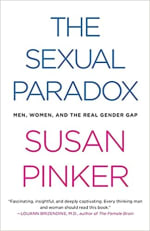

Pinker (b. 1957) is a former clinical psychologist, Wall Street Journal social-science columnist, and author. She is the sister of Steven Pinker (see #6 and #18 above).
The “paradox” mentioned in the title of this book refers to the discrepancy between (a) the fact that women as a group generally do better in school than men at all levels; and (b) the fact that men are still disproportionately represented in the upper echelons of most professions (the “gender gap”).
After reviewing the evidence for both of these well-known facts, Pinker then considers various theories that have been advanced to explain the paradox. In conclusion, she rejects the notion that systemic discrimination is the main explanation.
Rather, in the apt words of one of the book’s reviewers, she “posit[s] the idea that women don’t have the same preferences as men and therefore, might actually choose different paths, not be forced into them by the patriarchy.”
24.Dreamseller: An Addiction Memoir
By: Brandon Novak and Joe Frantz , 2008


Novak (b. 1978) is a professional skateboarder, Jackass series stunt performer, pornographic film actor, CKY crew member, author, and motivational speaker. Frantz (b. 1977) is a filmmaker, author, and podcast host.
The book under consideration is a memoir which recounts Novak’s struggles with drug addiction. Among other things, it describes his downward spiral into drug use—culminating with heroin addiction—attempted suicide, and institutionalization in mental hospitals.
In addition to co-writing the book, Frantz also created a 2009 documentary film based on the memoir: Dreamseller: The Brandon Novak Documentary.
After the appearance of the book and the film, Novak relapsed and started using heroin again. This time he was arrested, spent 10 months in prison, and later, on probation. He has been clean since 2015.
25.In a Different Voice: Psychological Theory and Women’s Development
By: Carol Gilligan , 1982


Gilligan (b. 1936) received her PhD in social psychology from Harvard University, where she wrote her dissertation, “Responses to Temptation: An Analysis of Motives,” under the supervision of Lawrence Kohlberg (1927–1967), who is best known for his six-stage theory of moral development in children. Today, she is professor of Humanities and Applied Psychology at New York University.
Gilligan first came to the attention of the academic world through a series of academic papers critiquing Kohlberg’s work as male-biased and of limited applicability to females.
The book under the consideration here summarizes Gilligan’s work for a broad, intellectual readership. In it, the author recounts three major empirical studies that she pursued over several years. In these studies, she employed questionnaires to elicit the reasoning that her female subjects used in thinking through the three different moral dilemmas. Gilligan concludes that, while the women’s reasoning was immature according to Kohlberg’s criteria, such an inference from the data is profoundly unfair to women.
Instead, Gilligan argues that the empirical data support an entirely different conclusion—namely, that women and men are different kinds of moral reasoners. Whereas men typically employ abstract logical reasoning in thinking about difficult moral cases, women typically reason in terms of an ethics of caring that is primarily directed towards the needs of all the persons involved in such cases.
This ground-breaking book was reprinted with a new preface by the author in 2016.
Interested in truly diving into the psychology discipline? Start by checking out the Most Influential Schools in the Field of Psychology over the last 20 years!
For additional study tips and tools, check out our full library of study guides for students.
Or find study tips, learning tools, tips for campus life and much more with a look at our Student Resources Headquarters.